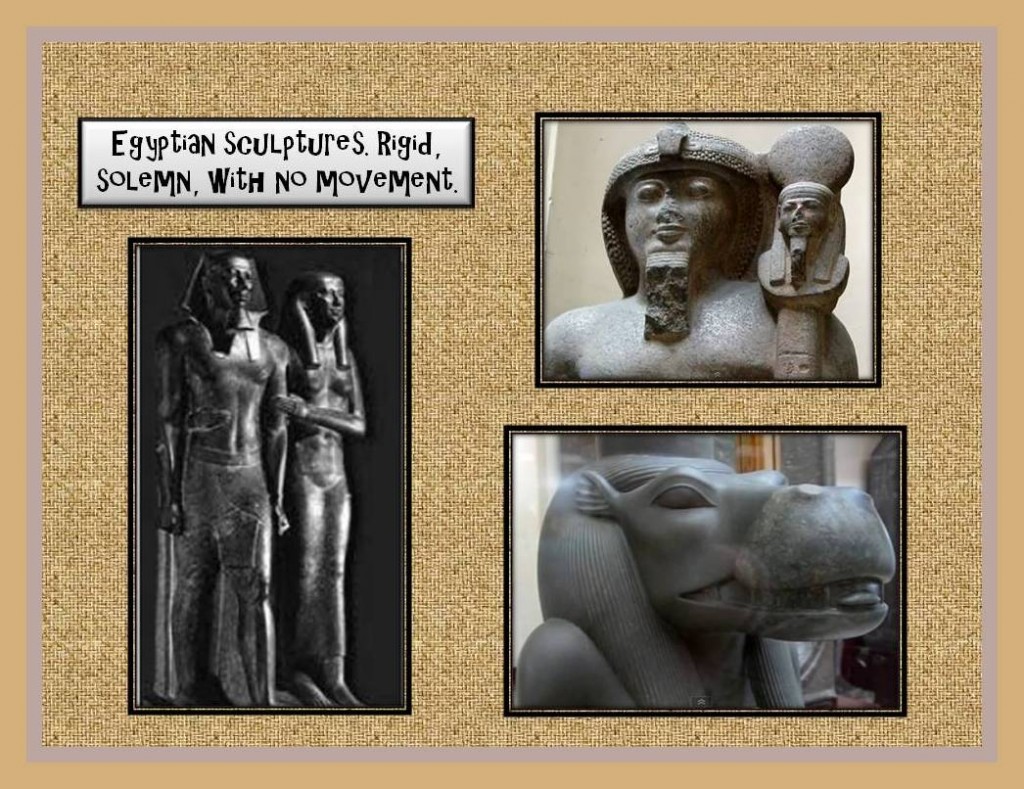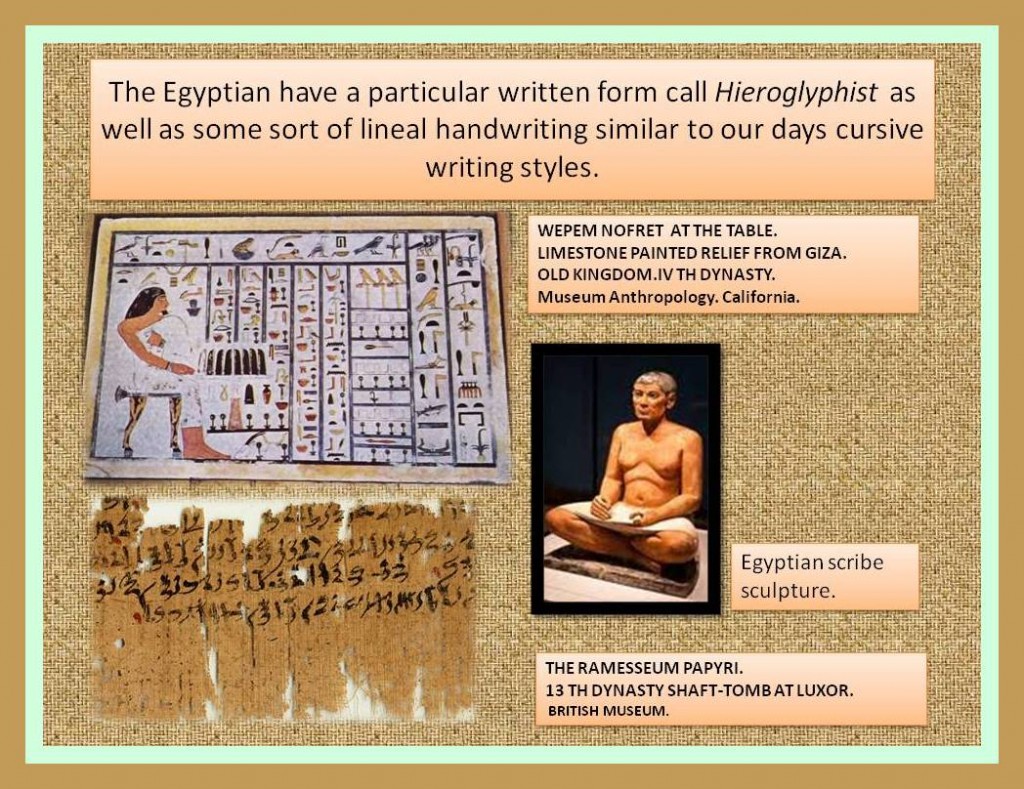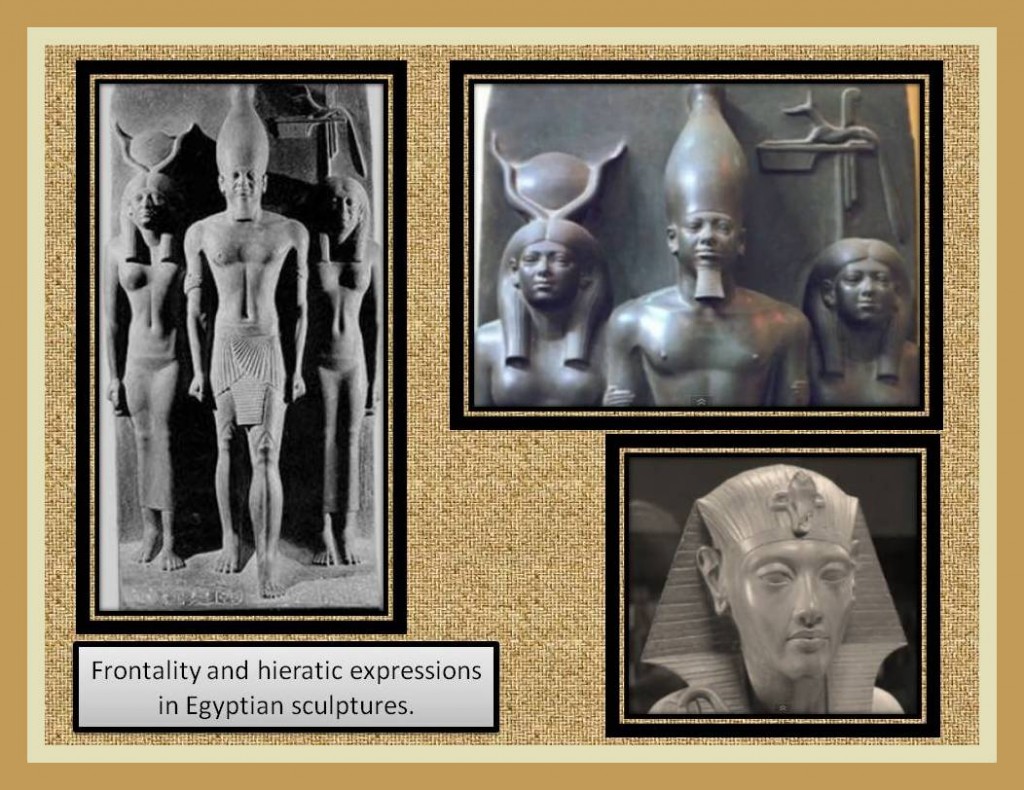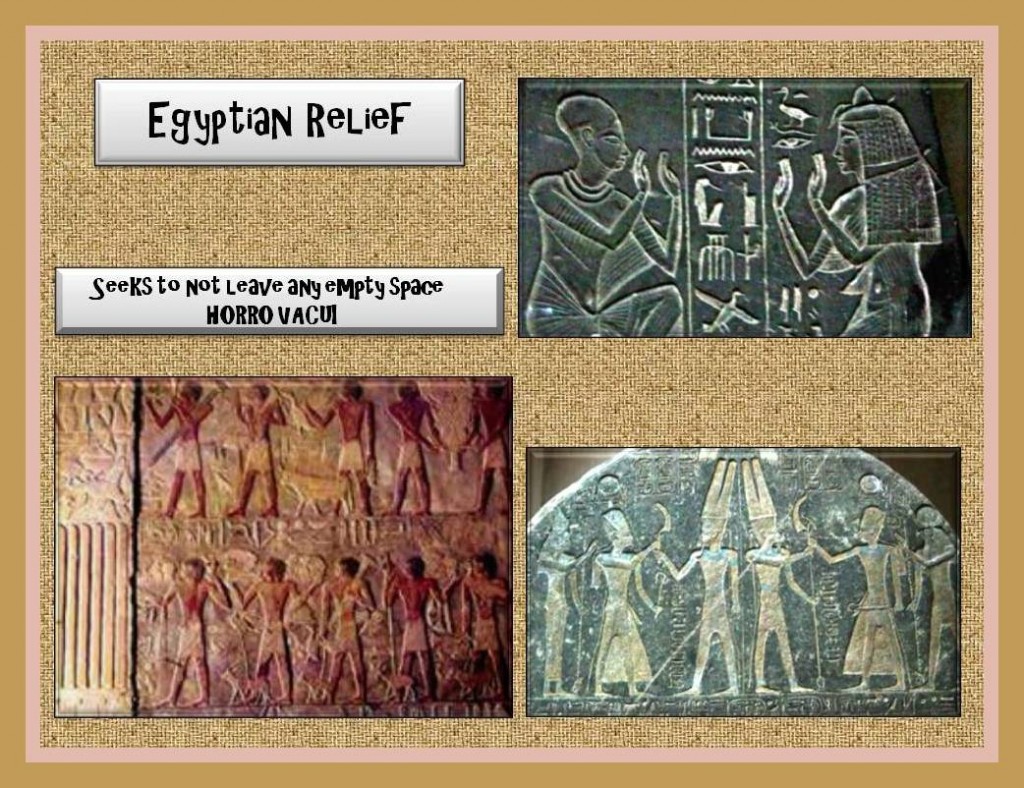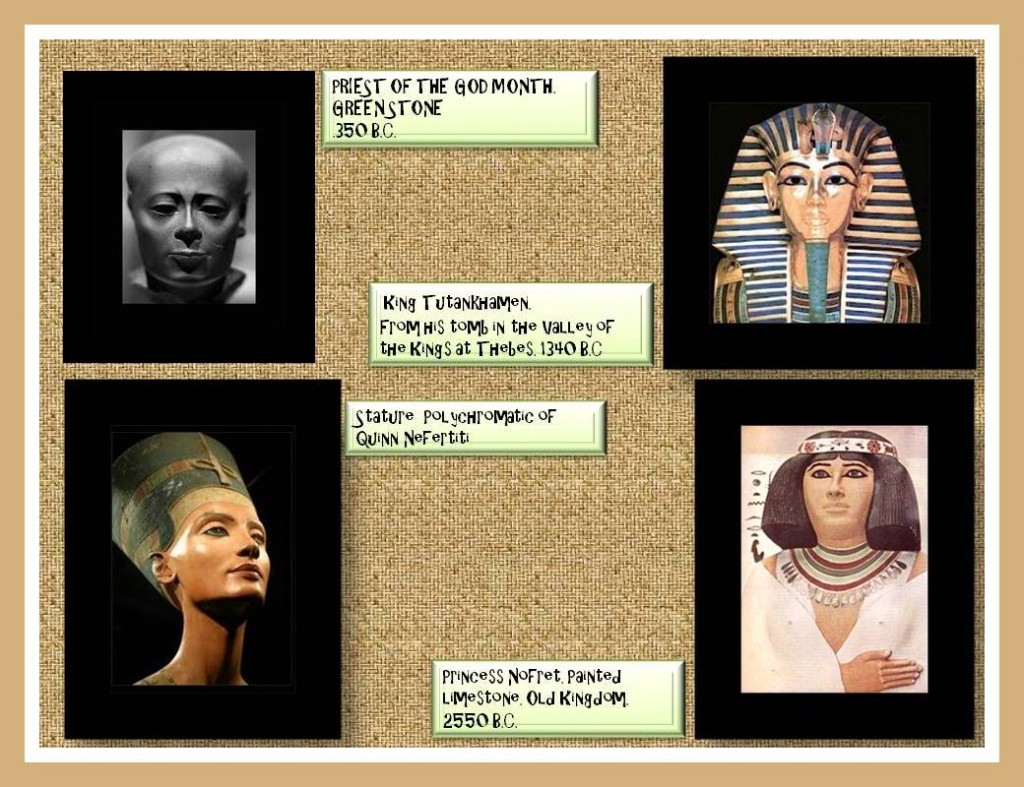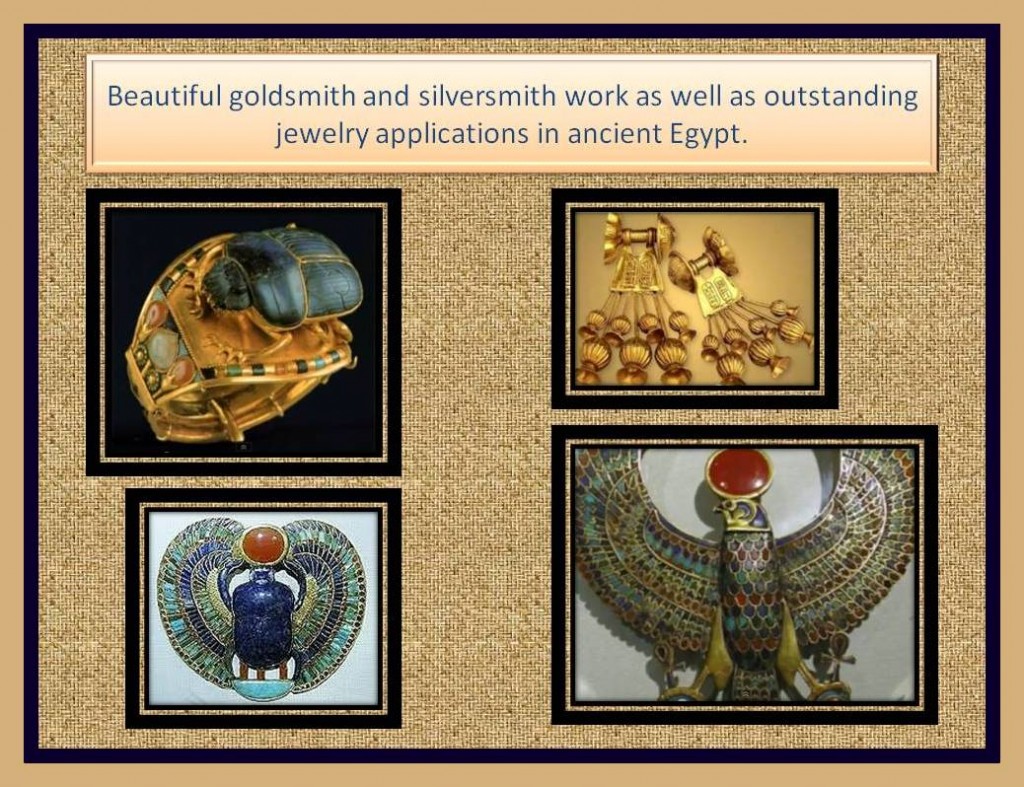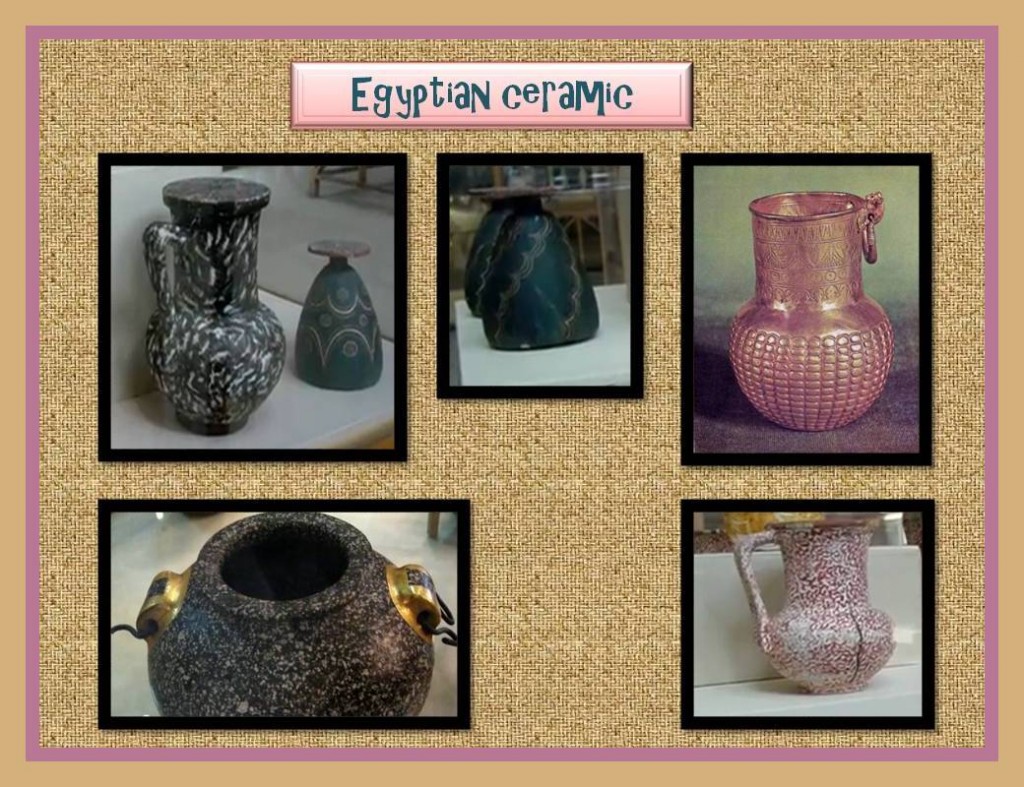Ancient Egyptian Sculpture.
The sculptor in Egypt was not considered or assessed as an artist or first character, was a character in the second category (and was not so in the case of the architect).This occurred because sculptors were engaged in a manual activity purely on request, by what the initiative or the creative aspect were not precisely what was required of them, only the one that conducted to the realization of the commissioning or order to be done to perfection; according to the specifications of the client (Church and State) the only ones that could have scope to acquire these ornamental and decorative pieces. So the execution of the work was made not taking in account the artisan point of view or creativity. The results of those commissioned labor today are works of art of unquestionable value nevertheless.
Interesting sculptures from the Roman Egypt period like the one who represent the god Horus with roman style clothes and shoes; show the fusion of elements from those culture were; the typical rigid egyptian position of the figure have variations with one foot slightly forward and his knees apart draped in a garment. From the waist down, he could be a senior Olympian deities or Roman emperor, while from the waist up keep egyptian elements as the bird head with the hieratic expression. (Click on the photo to learn more about this sculpture and the work made by the scientific at the British Museum).
General characteristics of Egyptian sculpture:
- They are utilitarian in nature.
- A purpose is not aesthetic (the beauty of them is something secondary).
- It is a hieratic sculpture.
- Solemn and ceremonious.
- The human figures excessively respected the rules of the official label. (Front to dignify the character) if it is round and with the head of profile if it is highlighted.
The exempt Egyptian sculpture’s
– They are rigid.
– Static.
– Idealized.
– Without movement.
– They show no feelings or emotions, expression serene without passion.
– The arms are attached to the body (sculpture block for technical reasons and to ensure strength and durability).
– Use of paste artificial eyes of glass to accentuate the depth of his gaze.
– They are limestone, polychrome wood and the most important in granite and basalt.
The egyptian sculptures in relief
– Polychrome use in low relief and is address to meet the contour of the figure (hole-relieve).
– They show no effects of perspective.
– All the figures are of the same size except the Pharaoh to emphasize their power.
– Completive technique is used: (parts of the front, the bust and the eyes and parts of the head, legs and feet of the profile).
– The compositions are always symmetrical and perfectly arranged symbolically.
– Items ranging from everyday scenes and agricultural work to the great feats of the Pharaohs, always counted by selecting the main and most appropriate moments and counting in a horizontal row, one after the other as a narrative sequence.
– Seeks to not leave any empty space (HORRO VACUI).
Famous sculptures; very well preserved many of them; are the admiration of millions of people today; they are true works of art showing a high degree of expertise, they are made in various materials, some more durable than others, but nevertheless because thousands of these works were kept in the tombs for their owners this artifacts were preserved in good condition thanks to been stored in special conditions where they were not directly exposed to the severity of the desert.
The Egyptian ceramic and Pottery will be explained better in a separate post because this manifestation have a wide range of important elements that shoul be adressed separate.

